From the Golden Calf…
This content is for members only
Unconfusing Confusion
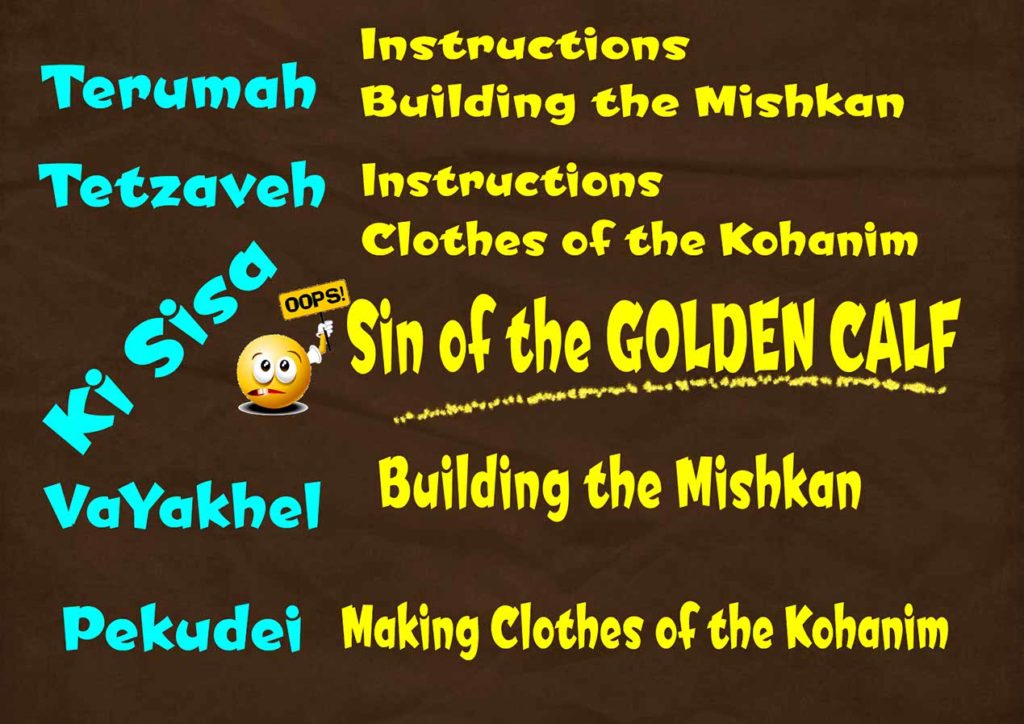
The first Parshiyos of the book of Shemos told us absolutely amazing stories about the Jewish people, from slavery to redemption. The first four Parshiyos, Shmos, VaEira, Bo, and Beshalach, were filled with action, suspense, and breathtaking miracles. Then came the dramatic giving of the Torah in Parshas Yisro and plenty of detailed laws in Parshas Mishpatim.
We now encounter the final 5 Parshiyos of the book of Shemos, and surprisingly, every single Parsha talks about the Mishkan! With all the Mishkan’s many intricate details it could become very confusing. So to “unconfuse” things, here is a general overview of the upcoming Parshiyos.
Parshas Terumah – HaShem gives Moshe all the details about the construction of the Mishkan and all its “furniture.”
Parshas Tetzaveh – HaShem tells Moshe how his special workers, the Kohanim, should be dressed when they work in the Mishkan.
Parshas Ki Sisa – This Parsha continues with more details about the Mishkan, but then dedicates much of the Parsha to the tragic story of the Golden Calf. Surprisingly, this story happened before Parshas Terumah and Parshas Tetzaveh.
Parshas VaYakhel – Think of this Parsha as sort of a repeat of Parshas Terumah. Moshe repeated to Bnei Yisrael HaShem’s instructions on how to build the Mishkan, and the Torah describes in great detail how they carried out their mission.
Parshas Pekudei – Now, think of this Parsha as a repeat of Parshas Tetzaveh. Moshe described to Bnei Yisrael the special clothes of the Kohanim, and the Torah tells us exactly how they made the clothes, down to the very last thread.
What’s fascinating about all this is that the Torah could have condensed Parshas VaYakhel and Pekudei into just one Pasuk! That Pasuk could have looked something like this: “And Moshe instructed Bnei Yisrael all that HaShem commanded him, and they did it.”
It’s a great question but the answer is even better. This only goes to show how great HaShem’s love of Bnei Yisrael is. When you love something you never get tired of talking about it. We will discuss this more in the beginning of Parshas Vayakhel, under the title, “Sooooo Loooong?”
A Holy Mobile Home
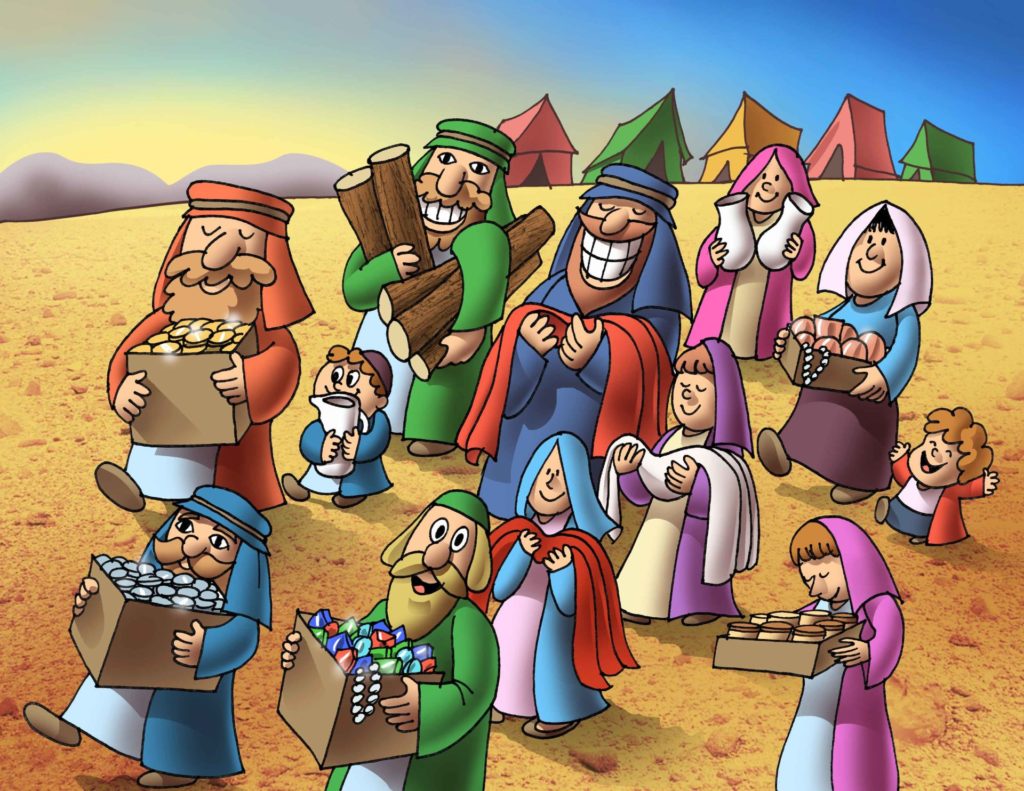
Have you ever received a wonderful present, like a toy kitchen or a mini-car, with small writing on the box that said, “Some Assembly Required”? Putting this gift together often turns into a grand family project, and a rather frustrating one at that!
You can imagine that building the Mishkan was going to be one big, challenging project! As we shall see later, even the great Moshe Rabbeinu had a tough time understanding all of the details which building the Mishkan entailed.
In order to get the project going, HaShem gave precise instructions on how to make every single part of the Mishkan. All kinds of materials would be needed – pure gold, silver, copper, wool and linen of all colors, animal skins, wood, and precious stones.
Who would contribute these beautiful items and where would they get them from?
Who would contribute?
Everyone!
Where would they get them?
Bnei Yisrael had plenty of gold, silver and other precious materials with them when they left Egypt, and picked up a lot more gold and silver from the Egyptians at the splitting of the sea.
These generous, voluntary gifts Bnei Yisrael gave for the Mishkan were called Terumah offerings, which happens to be the name of this week’s Parsha – Parshas Terumah. What a perfect name!
It All Adds Up
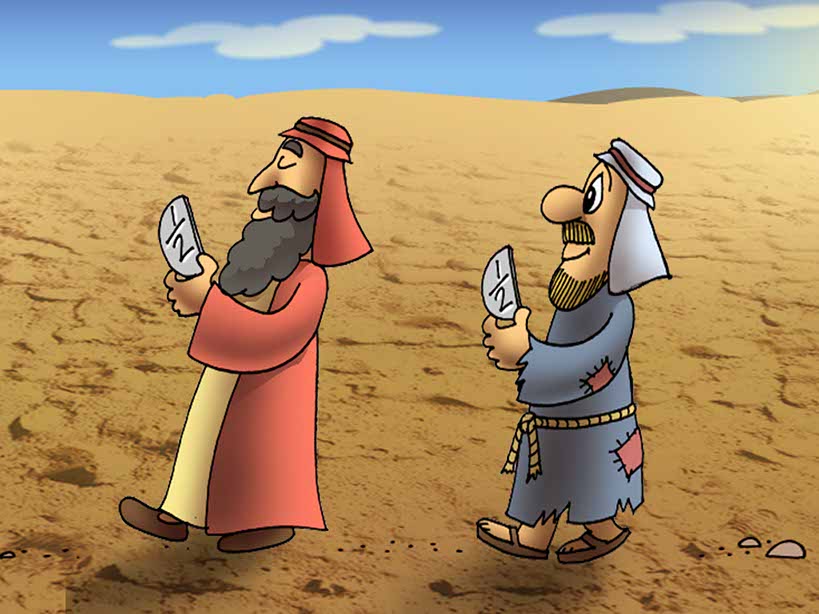
The gifts Bnei Yisrael gave for the Mishkan were voluntary; people gave as much or as little as they wanted.
But another kind of Terumah offering, called the Machatzis HaShekel, was given by the people – no more and no less than a half-Shekel of silver. This coin was used to make the sockets for the wooden beams of the Mishkan to keep it strong and sturdy. This also kept all Bnei Yisrael strong and united together with their small but valuable contribution. Nobody could say, “I am better than you since I gave more!”
Once all the materials were collected it was now time to start building the Mishkan!
Designed by the Master Architect
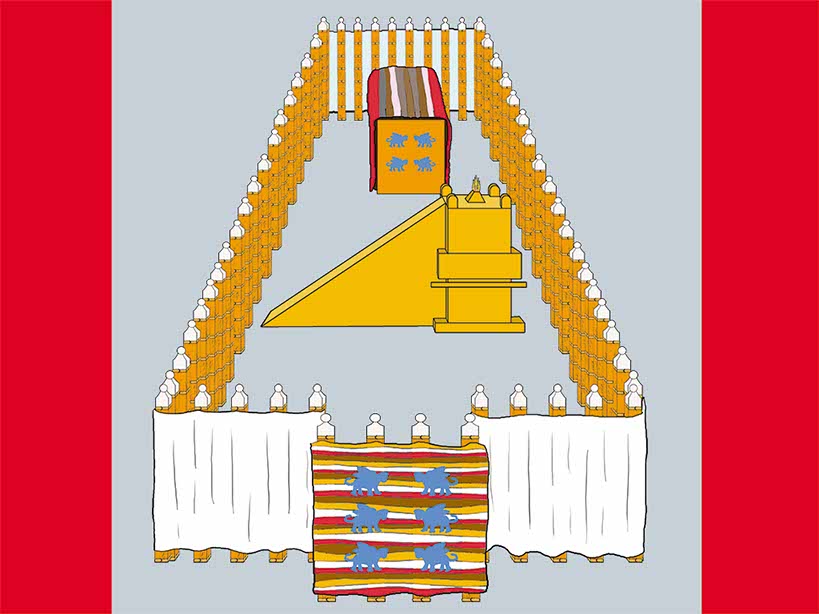
Moshe was also given instructions for the exact design of the Mishkan by the Master Architect – HaShem!
The Mishkan would have 3 sections:
1. The Kodesh HaKadashim (Holy of Holies), where the ark containing the Ten Commandments would be kept.
2. The Kodesh (Holy), which contained the Shulchan (table), Menorah, and the Mizbei’ach HaZahav, the golden altar which was used to burn nice smelling spices.
3. The Chatzer (courtyard), where Bnei Yisrael could bring animal sacrifices on the big Mizbei’ach HaNechoshes (copper altar). Between this Mizbei’ach and the Kodesh was a huge pot, called the Kiyor, filled with water. The Kohanim would wash their hands and feet in the Kiyor before entering the Kodesh.
So keep in mind the 3 parts – the Kodesh HaKadashim, the Kodesh, and the Chatzer.
The Golden Ark
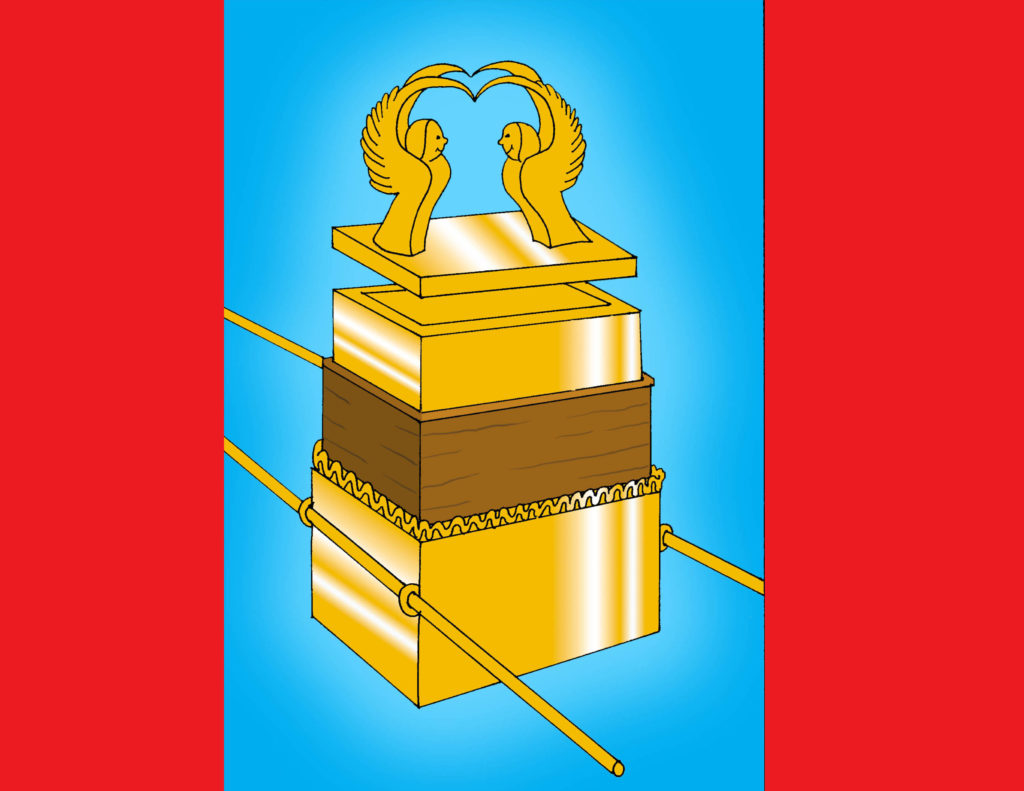
The Aron was a beautiful work of art – but more importantly, it housed the 2 Luchos (tablets) on which HaShem had written the Ten Commandments.
The Aron was made out of 3 boxes, one inside the other. The biggest box was made of pure gold with a beautiful gold rim. Inside it was a smaller box of wood, and into that one fit an even smaller box of pure gold. In this way, the wooden box was covered from the inside and the outside with gold.
The 2 tablets of the Ten Commandments were kept inside the Aron together with some shattered pieces of the first 2 tablets that Moshe broke after the tragic episode of the Golden Calf.
Not only was the Aron was full of gold, but even its cover had to be very special! HaShem continued his instructions to Moshe, “Take a large chunk of gold and carve out a thick cover for My Aron.”
This covering of the Aron contained a tremendous amount of gold and was called kapores – meaning “forgiveness,” for this was one of the ways Bnei Yisrael were forgiven for the sin of the Golden Calf.
HaShem said, “Take this chunk of gold and carve out 2 Keruvim facing each other. Whenever I speak to you, My voice will come out from this place.”
These 2 Keruvim were gold figures in the shape of angels – one with the face of a young boy and the other had the face of a young girl.
HaShem said, “Make poles of acacia wood covered by gold. Insert the poles through rings on the sides of the Aron, so that the Aron could be carried when you travel. Never remove these poles.”
Miracles Galore!
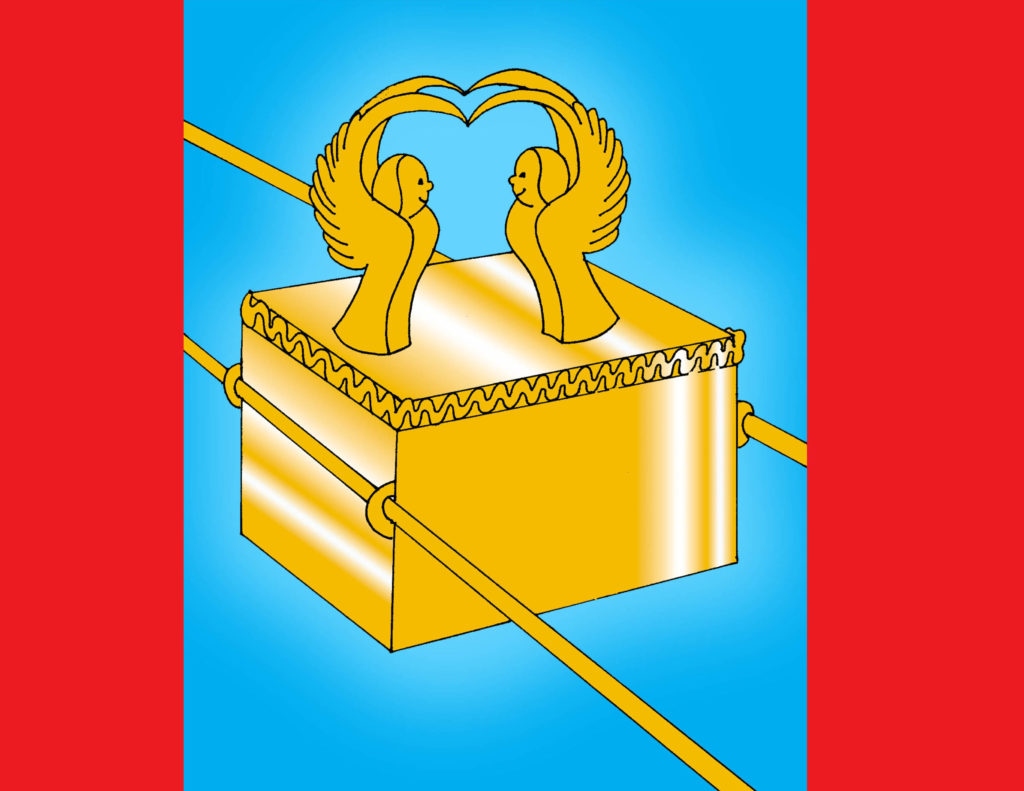
It was the privilege of the Levi’im (Levites) to carry the Aron when Bnei Yisrael traveled from place to place. With all that gold, it must have been extremely heavy, but miraculously, the Levi’im didn’t feel any weight on their shoulders at all. In fact, the Aron lifted the Levi’im and also carried them!
And yet another miracle! According to the measurements of the Torah, the Aron extended from one end of the Kodesh to the other end. It should have taken up all of the space in the Kodesh Kodashim, yet miraculously there was plenty of room for the Kohen Gadol to walk all around the Aron! In the words of our great Sages, “The place of the Aron occupied no space at all.”
The Show Bread
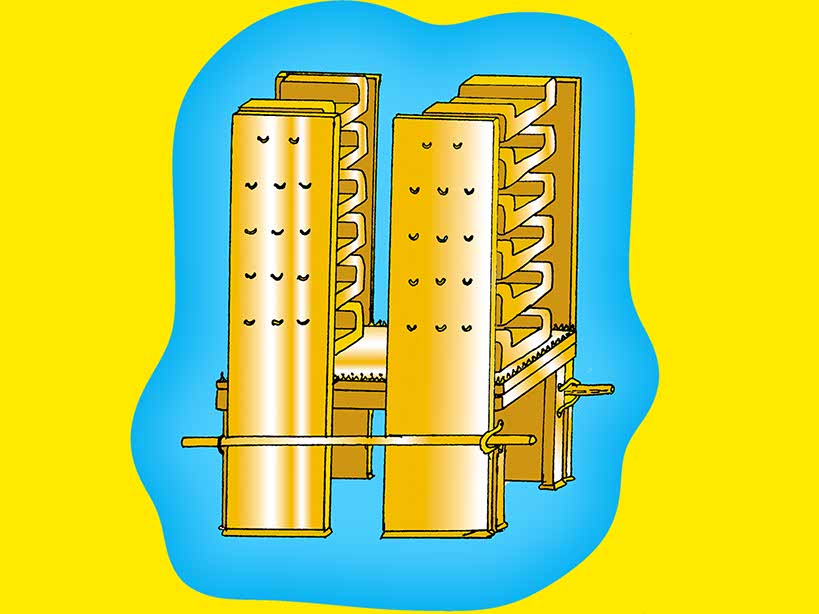
HaShem continued, “Make a Shulchan, a wooden table. Completely cover the Shulchan in pure gold, with a decorative gold rim all around the edges.”
On the table were special trays for the 12 loaves of lechem hapanim – the special bread. These 12 loaves were baked every Friday, before Shabbos, and remained there for an entire week, until the following Shabbos, when they were given to the group of Kohanim who were working that week in the Mishkan. At the exact moment the 12 loaves from the past week were removed from the shulchan, 12 new loaves were placed on the shulchan. So it ended up that the shulchan was never empty of its 12 loaves of lechem, not even for one second.
Miraculously, while the 12 loaves of bread were replaced with new bread – the “old” bread stayed perfectly fresh!
Years later, when Bnei Yisrael entered the land of Israel, they would visit the Beis HaMikdash 3 times a year – Pesach, Shavuos and Sukkos. During those visits, to demonstrate this great miracle, the Kohanim would lift up the “old” loaves of bread and proudly proclaim to everyone, “Look how much HaShem loves us! See this bread baked a week ago? It’s soft and fresh, as if it came out of the oven just now!”
This is why it’s called “The Show Bread,” showing Bnei Yisrael the awesome miracle of HaShem.
The Year Round Menorah
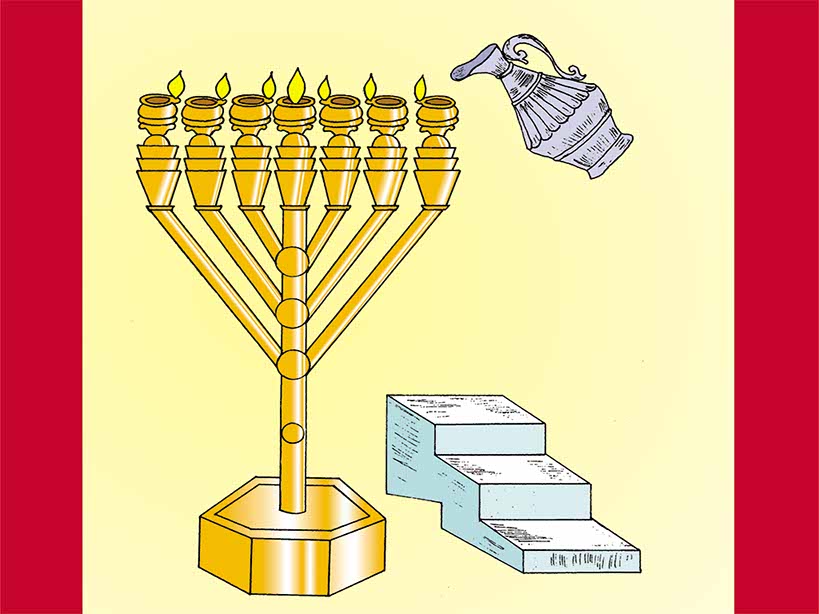
Now came the next set of instructions. “Take another huge chunk of gold,” said HaShem, “and carve out for Me a golden Menorah with 7 straight branches.”
This Menorah in the Mishkan was not quite the same as the kind you light on Chanukah – the Chanukah Menorah has 8 lights while the Mishkan Menorah had only 7.
HaShem described exactly to Moshe exactly how He wanted it built:
“Decorate the branches of the Menorah with 3 shapes: 22 cups, 11 buttons, and 9 flowers. Set aside a bowl at the top of each branch to hold the oil and place a wick inside each bowl. Only the purest, clearest olive oil may be used for My precious Menorah.”
This was quite a challenge to accomplish. Usually, craftsmen first make the detailed, smaller pieces and then attach them to the main structure. In this instance, Moshe was commanded to carve all the cups, buttons and flowers from one single block of gold, a task difficult for even the most skilled expert!
On top of this Moshe was quite puzzled. He didn’t understand exactly how this special Menorah was to be built.
“I really wish I knew precisely how to build this Menorah. I’m a bit confused and I can’t afford to make one mistake… After all, it’s a Mitzvah from HaShem.”
You know the expression “a picture is worth a thousand words,” so HaShem showed Moshe a Heavenly vision of this Menorah, made of fire.
Moshe began building the Menorah, but still, had a very difficult time. So HaShem told Moshe, “Throw the block of gold into a fire.” Moshe, of course did what he was told and POOF – out came a perfectly shaped Menorah – 7 branches decorated with 22 cups, 11 buttons, and 9 flowers!
The Roof and the Walls
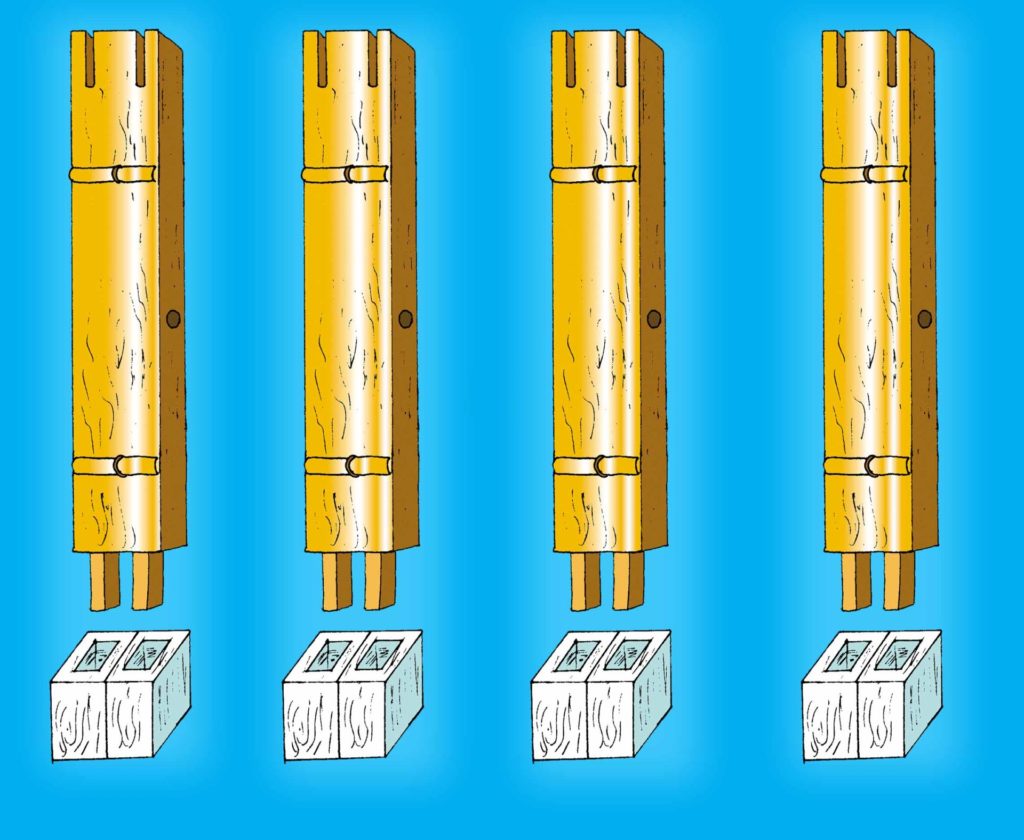
In any major building, every detail is important, even the roof. So too, in the holy building of HaShem, the Mishkan. The covering was unique. It had 3 layers, made of all kinds of colorful animal skins. It was absolutely breathtaking!
The walls were made of beams of acacia wood, each one 10 Amos long. An Amah is a measurement that equals about 2 feet. The beams fit into silver sockets at the bottom – just like a giant set of Legos!
As a final, decorative touch, stunning curtains hung at the entrance to the Mishkan and around the courtyard inside.
In addition, HaShem gave Moshe many more instructions and fine details on how to construct this portable Mishkan in a way that even in a huge desert sand storm, it would remain standing strong and steady and not shake back and forth like a huge Slinky.

